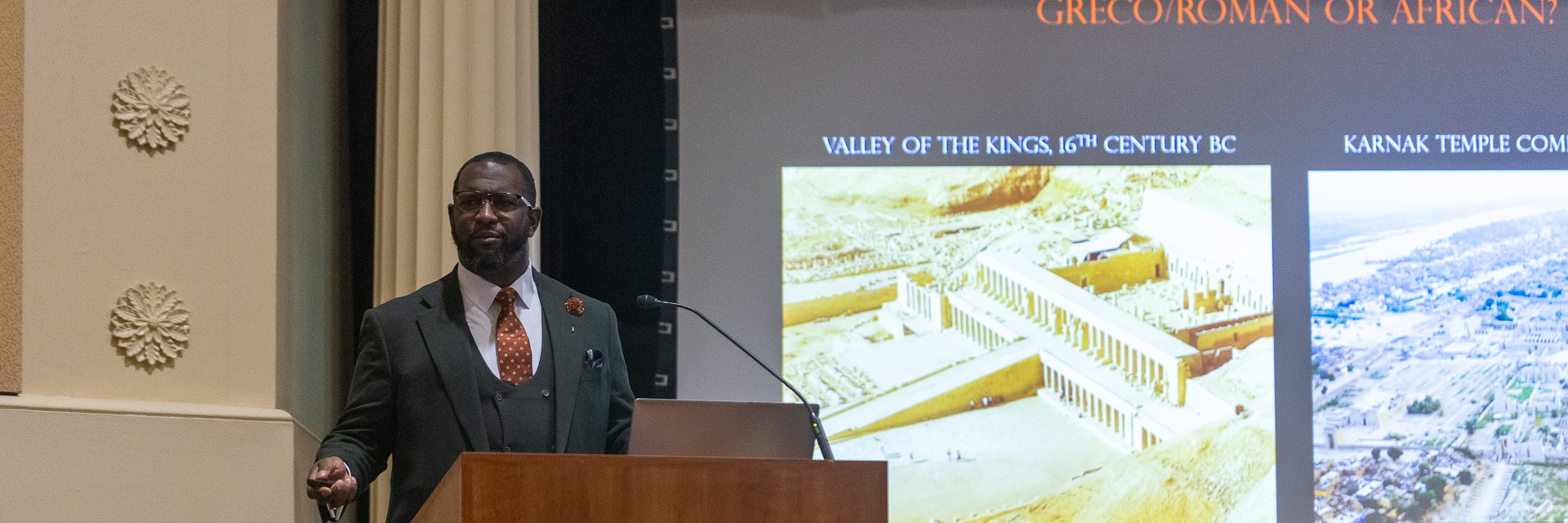
Philip Smith Shows Impact of African-American
Designers and Builders on Classical Architecture
Philip Smith Shows Impact of African-American
Designers and Builders on Classical Architecture
Wes McRae | November 20, 2023 – Atlanta, GA
The School of Architecture's Fall Lecture Series recently brought Philip D. Smith, Professor of Classical Architecture at the American College of Building Arts, to speak on African American classicism in architecture.
"Phillip's lecture asks us to reconsider our perceptions of classical and traditional architecture by sharing the impact African American architects, designers, and builders have had on our built environment," said Julie Kim, chair of the School.
"What I have enjoyed the most about these lectures is how each of the speakers — through a historical lens — intentionally draws connections between the influences of classical traditions of architecture to current architectural research and practice."
After showing Egyptian influence on the ancient Greek and Roman architecture that defines the Classical tradition, Smith turned his attention to the work of African-American builders, particularly in Charleston, South Carolina. "The most important thing to remember is that virtually every structure in the City of Charleston, between 1680 and 1865, was built, detailed, and to an extent designed entirely by slave labor."
"John Williams, a formerly enslaved man, essentially created and built the Pinckney Mansion, one of the most influential homes in Charleston. He sets forth this precedent of 18th century Georgian buildings in Charleston. And it was executed by these people who were strictly forbidden to be formally educated in the western sense."
"Similar the Romans relying on Egyptian quarriers and stonemasons, Charlestonians depended on the knowledge of enslaved to maintain a thriving and growing city and colony."
From Williams's influence in Charleston, Smith examined the legacies of notable classical African-American architects Robert Taylor, Wallace Augustus Rayfield, William Sidney Pittman (all of whom had close affiliation with Tuskegee University), and Julian Francis Abele.
These classical African-American architects have left an overwhelming legacy on current African-American institutions, Smith said. "80 percent of African-American sacred architecture derives from a classical or traditional precedent. Almost all the administrative buildings of historically black colleges and universities take their forms directly from classical forms including Independence Hall."
"The practice of hiring out enslaved people to build the great 18th and 19th century structures reinforces the notion that classical and traditional architecture is not a racist or prejudiced discipline. Yes, institutional slavery has left a permanent stain on American society. But it was through this unfortunate practice that the traditions of continental Africa survive. Just as many aspects of American culture, such as music, food and individual arts, have African-American influences, so does classical architecture. American classicism is not only rooted in the Greco/Roman, but in the richness of the village mindset of the African-America community."
Questions?
Contact Us